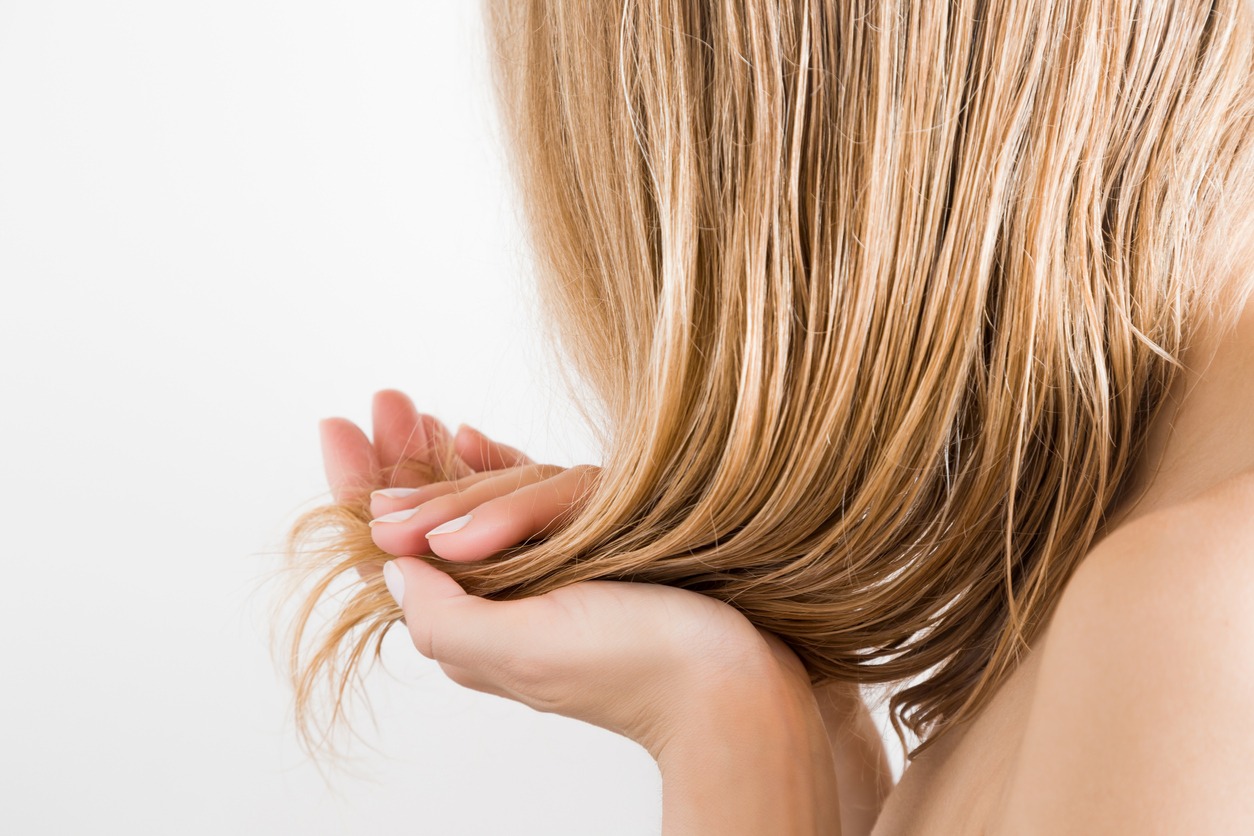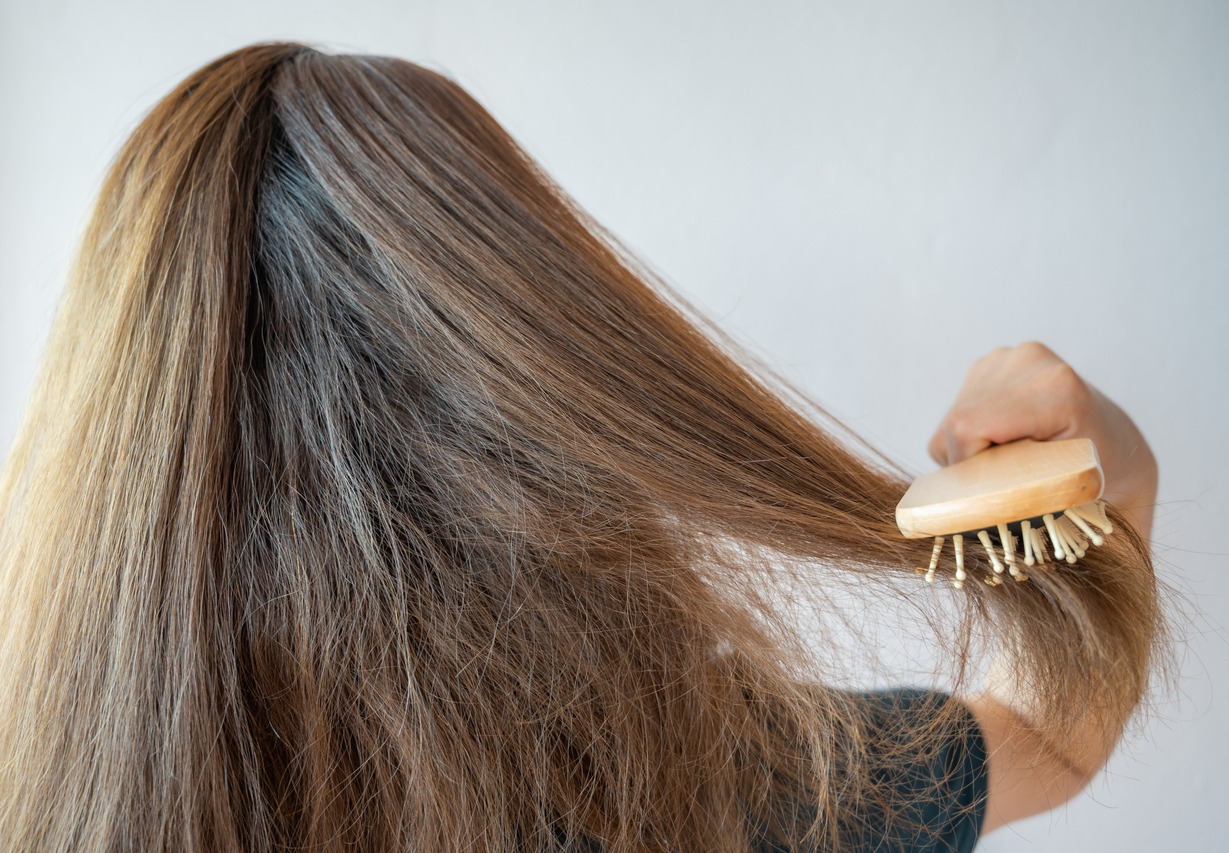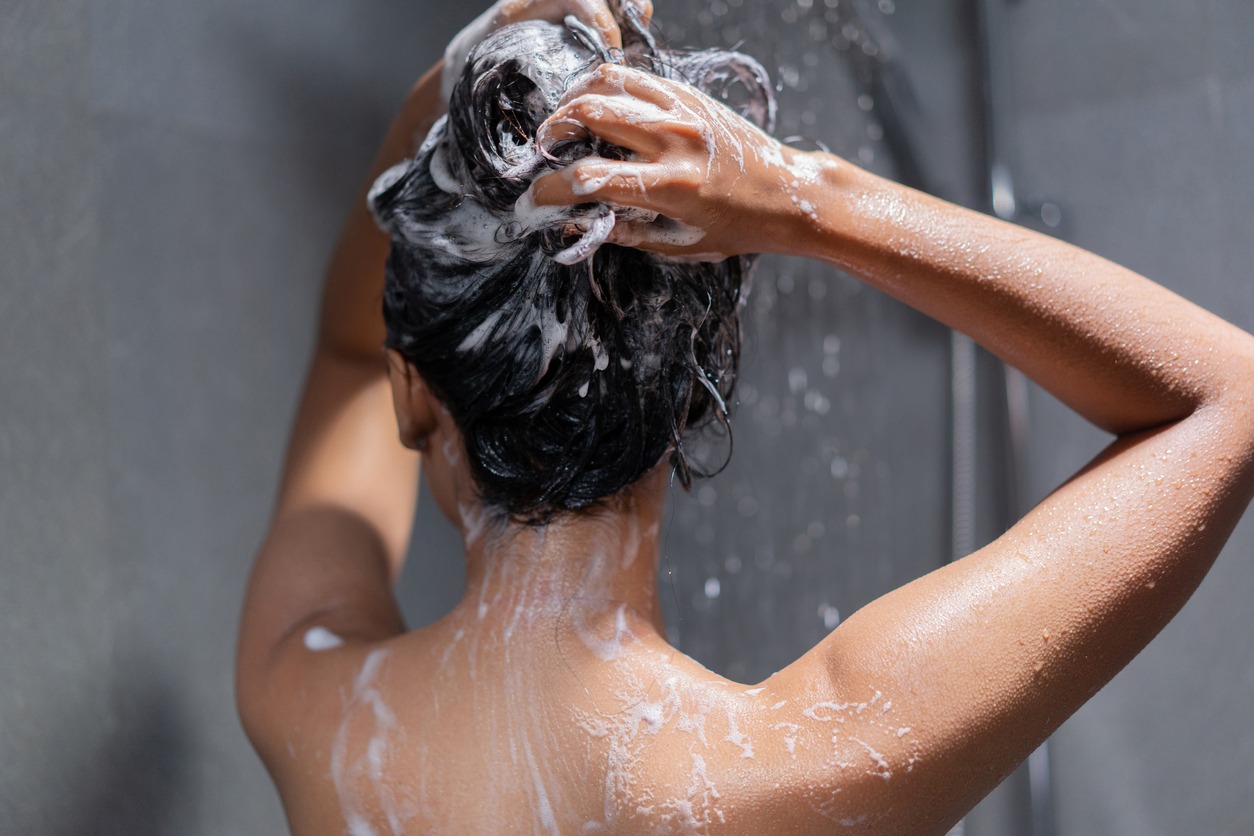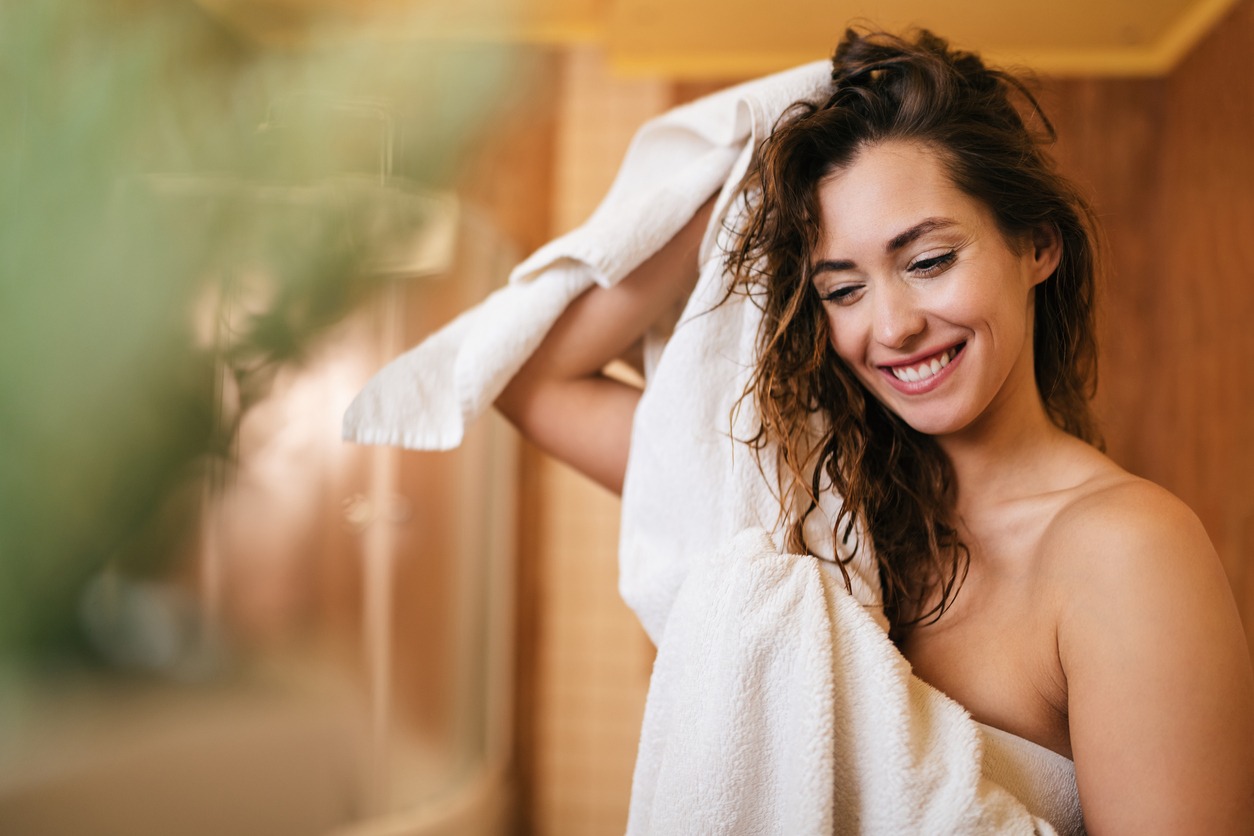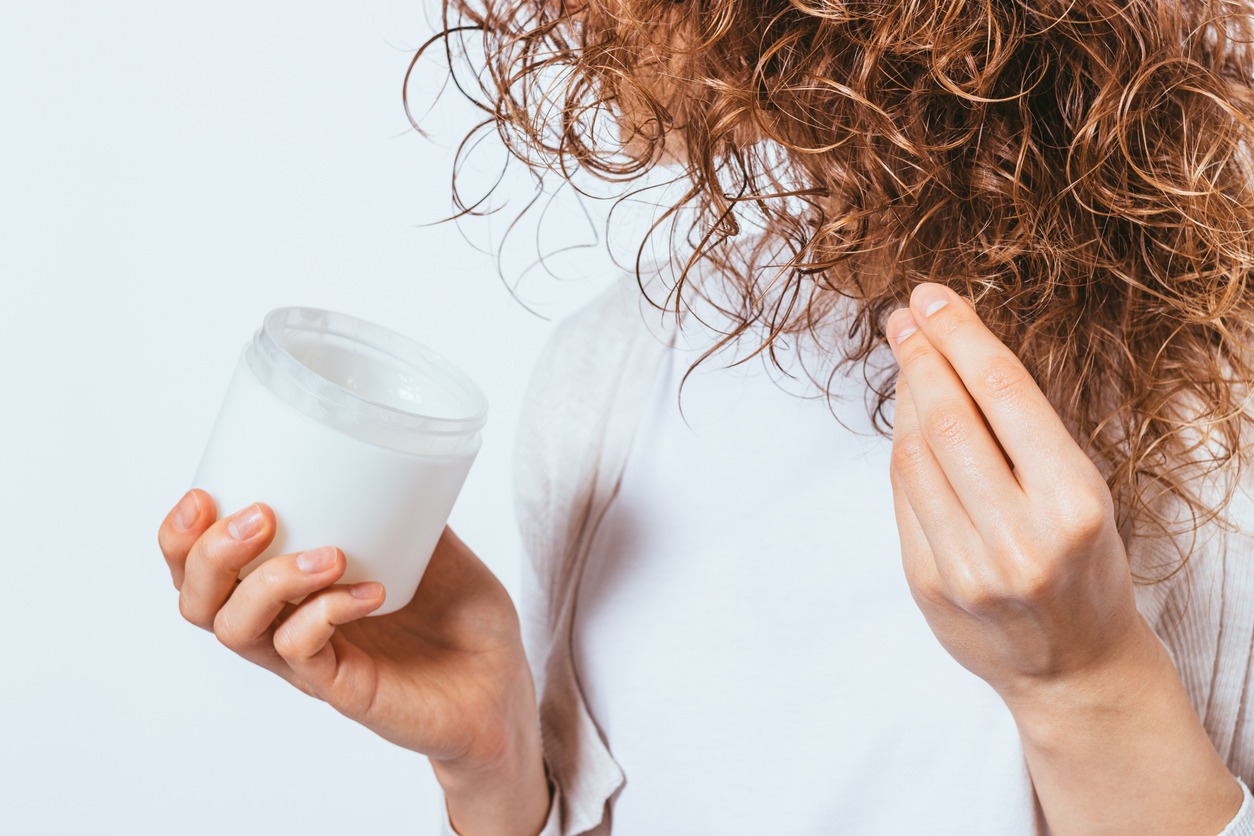The sebaceous or oil glands in your scalp, which release sebum, help to naturally hydrate your hair. This travels from the scalp to moisturize the remaining hair strands. However, this natural moisturizing system can occasionally be ineffective, particularly if you have age- or genetically-related under-active oil glands. In addition, the length and type of your hair can prevent sebum from contacting it in a timely manner. Additionally, excessive styling, excessive washing, and other treatments might result in dry hair.
Possible Causes of Dry Hair
You may wonder why when your hair starts to dry out. Your hair is not getting enough moisture for a variety of reasons. One of them is that not enough natural oil is produced by your scalp to nourish your hair. This may run in families or develop organically as people age when the rate of oil production slows down. Additionally, this explains why as people age, their skin becomes drier.
In addition, it’s also conceivable that your hair’s structure or condition contributes to dry hair by allowing moisture to leave. The medulla, or core, which is located in the center of a strand of hair, the cortex, which surrounds the medulla, and the cuticle are its other two constituent sections. The medulla serves as the hair’s skeletal foundation. Your hair’s flexibility, form, curl, and resilience are all attributes of the cortex. The cuticle also prevents moisture from evaporating, giving the appearance of lustrous hair. The hair will therefore appear lackluster and flyaway when the cuticles are opened.
The use of blow dryers, flat irons, curling irons, and hot rollers are examples of thermal abuse that can result in dry hair. Although they might give you gorgeous hair, they are long-term detrimental. In addition to these, your hair can lose moisture through improper conditioning, excessive washing, excessive exposure to the sun, wind, saltwater, chlorine, and dry air, overuse of chemical treatments, and improper brushing.
How to Keep your Hair Moisturized?
Before applying heat, use thermal protection
Apply a thermally protective product, such as serums, to your hair before styling it with a blow dryer or an iron. This can act as a barrier between the heat and the hair strand, preventing the drying effects of thermal instruments on your hair.
Take a break from applying heat
Try to avoid using hot tools on your hair that can dry it out if at all feasible. Try experimenting with heat-free hairstyles like buns and braids instead. This will give your hair a vacation from hot equipment that deplete its moisture.
Select a shampoo made specifically for dry hair
When purchasing shampoo, choose for creamy varieties as opposed to clear ones because they may contain components like apricot kernel oil and aloe vera, which are beneficial for dry hair. Your hair will undoubtedly receive moisture from these components and maintain it.
Skip the daily shampoo
It could be wise to skip a day or two between shampoos if you typically wash your hair every day and you notice that it is becoming dry. In this manner, the natural oil on your scalp will have a chance to rehydrate your brittle hair. Applying dry shampoo to your roots will instantly refresh your hair and absorb extra oil if your hair becomes excessively oily.
Choose ammonia-free hair color
It is best to choose ammonia-free hair dyes if you enjoy dyeing your hair. Inform your hairstylist that you want semi-permanent and permanent hair colors that don’t include ammonia. It’s because they don’t dry out your hair and are kinder to the hair.
Do not brush your wet hair
Remember that damp hair is sensitive and that a hairbrush’s bristles can easily tear or break it. Use a wide-tooth comb to untangle hair strands. Additionally, boar bristle brushes are excellent because they gently disperse your hair’s natural oils as you brush.
Tip for Moisturizing Various Hairstyles
Curly Hair
Your hair is more prone to dryness if it is curly. It’s because your hair’s curls make it harder for sebum from your scalp to reach the rest of your hair. Additionally, over-styling and over-washing your hair can only exacerbate the dryness.
What we can advise is to use deep-moisturizing shampoos and conditioners on your hair. You should keep an eye out for ingredients including almond, olive, coconut, avocado, monoi, and argan. All of them can aid in keeping moisture within. In addition, you can use these components by themselves as a monthly hair mask to hydrate your hair.
Thick and Coarse Hair
A deep moisturizing treatment is ideal for you if you have thick hair that has transitioned from being dry to being coarse. Shea butter is among the greatest options available. Due to its rich fatty acid content and antioxidants, it is well known to be effective for excessively dry hair. In addition, you can replenish the moisture in your hair by applying a hair mask once a week.
Fine Hair
Because sebum has a better opportunity of penetrating the strands, fine hair is less susceptible to natural moisture decrease. However, if you frequently wash your hair, use thermal styling equipment, or color your hair, your hair may still be dry. Use a lightweight shampoo and conditioner made for fine hair to hydrate it and help it keep its moisture. Because applying moisturizer to an oily scalp will simply cause your hair to become weighed down, you can also moisturize just the ends of your hair. Jojoba oil and lavender oils are also excellent for fine hair.
Gray or Mature Hair
Because the sebaceous gland activity decreases with natural aging, gray or mature hair is typically drier. Combining a leave-in moisturizing spray with a deep-moisturizing shampoo and conditioner might help make up for this loss. To assist avoid excessive dryness, you can also cut back on how often you wash your hair each week.
Tips for Applying Hair Moisturizers
You should start by applying hair moisturizers like conditioners and masks to the ends of your hair. You don’t have to moisturize your scalp unless it is severely dry.
Your hair should be wet while applying moisturizers so that the substance may thoroughly penetrate your strands. Use deeper conditioners once a week instead than leave-in or everyday conditioners. Leave a hair mask or oil on your hair for up to 20 minutes for the maximum benefits. After that, rinse with lukewarm or cool water. Never wash your hair in hot water as this might lead to additional drying and damage.
Conclusion
The greatest strategy to keep your hair moisturized is to take care of it by avoiding the use of damaging instruments and chemicals. We hope the advice we provided will assist you in maintaining your hair’s hydration and smoothness or in treating dry hair.

